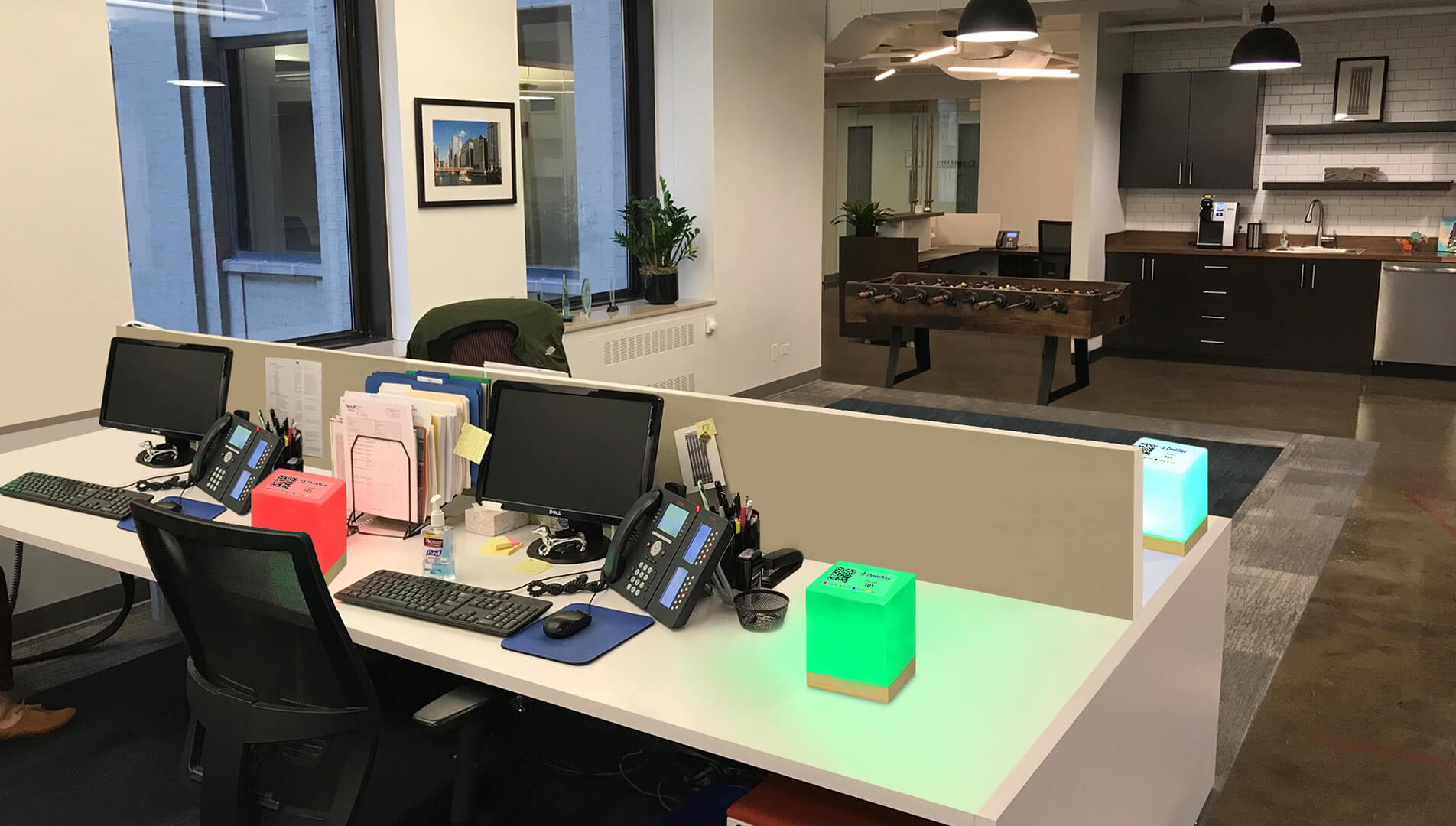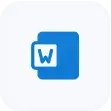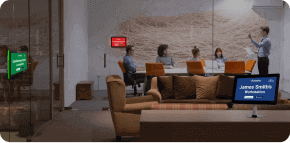
Using software to make transition back to the office more efficient
Employees, in search of socially-distant workspace may, for instance, choose to book only non-contagious cubicles (Green lights). And, if facility cleaners wish to decommission a collection of workspaces for wipe-downs. They can easily set the status to Red, disallowing access to those spaces to employees.
These transition back to the office software tools and devices come with added intelligence built into them. They integrate with corporate communication systems, like Microsoft Exchange and Active Directory, allowing employees to manage workspaces. Book or release assets and change availability statuses remotely. When used in conjunction with other intelligent devices, like DeskFlex WorkStation Touchscreens, users can view upcoming engagements for specific workspaces, and even book the workstation on the touchscreen. That’s yet more flexibility in back to work transition planning.
Shortly – and one hopes it’ll be very shortly! – employers will be welcoming hundreds of thousands of employees back to work across the world. Depending on what each company’s back to work policy is, it’s likely that not all employees might work out of designated workspaces in the office. As well, it may even be that some employees opt for a gradual transition – working few days on-premises, and a few days off-site.
The challenge for line managers and facility administrators is: How to keep track of these transition plans to make back to work effective and efficient? The answer: Use transition back to the office software.
Transition choices
As employers strategize their back to office approaches, they’ll have a myriad of choices to make regarding how to go about easing into the transition. Obviously, returning employees will still need to maintain social distancing in the workplace. So, how will managers enforce that? And then, there’ll likely be need to shut down parts of the workplace for regular (and more frequent!) cleansing and decontamination. So that too will impact transition planning.
Most importantly, because working from home is likely to still be in vogue, how do facilities managers make use of unused (or temporarily vacant) desks, cubicles and workstations. Clearly, there’s no one-size fits all solution to transition planning. With so many moving parts to the puzzle, office administrators need highly flexible workplace software to aid them.
Tools of the trade
For employers looking for powerful tools to help them plan, implement and manage their back to work strategies, DeskFlex has a variety of solutions that’ll make transition planning more efficient and effective.
1) With Room Scheduling software, employees, who wish to work from the office, can book desks, cubicles and workstations remotely, ensuring they have suitable workspace reserved when they do get to the office
2) The use of Bluetooth-enabled Social distancing management beacons enable on-premises staff to receive notifications via their smartphones or other mobile devices. This alerts them that they are in the proximity of a Beacon. Which may be used to enforce social distancing between desks and cubicles
3) FlexCubes are yet another social-enabled, software-controlled device that’ll help transition planners enforce social distancing within the workplace. Placed on desks and cubicles, these devices display color-coded lights to indicate the status of a workspace. Available (Green), Reserved (Red), Permanently assigned (Blue) or Soon to be available (Yellow).















































 Support
Support  Demo
Demo  Blog
Blog